While maintaining geophysical equipment placed out in the field, you may find some aluminum alloys are heavily corroded in case of contact with water (Or worst if battery leakage).
That can be the case when you return for maintenance and revision, maybe months after last installation or visit.
Pure aluminum is usually quite resistant to corrosion. But aluminum alloy castings are more susceptible of heavy corrosion. Aluminum alloys with other metals are meant to be stronger than pure aluminum. It depends on the type of alloy whether it is more or less prone to certain types of corrosion. In some cases corrosion would be so deep that may pass through the walls.
The problem here is how to treat the aluminum surface so it gets free of corrosion, clean and prevents future corrosion.
The treatment for aluminum is quite different on each case. For cosmetic cleaning, this is when aluminum surface has lost bright because of light surface corrosion, most people suggests using some kind of cleaning oil, or acetone or some petrol compound. For heavy surface corrosion, experts suggest the use of phosphoric or hydrochloric acid based cleaners, and other inhibitors of corrosion.
Treatment of extra heavy corrosion starts with mechanical removal, like grinding or other abrasive processes. You should take as much of the corroded material as practicable. For example, corrosion that enters holes or structures in the case. After removing corrosion we should be using chemical cleaners and inhibitors for the remaining corrosion. If the corrosion produced holes in the structure it may be convenient to fill those holes with aluminum solder. If big enough we should cover them with aluminum sheets and solder or rivet it.
At the end of the process we should cover the surface using anti-corrosion paints and protective coatings, in order to protect the surface from future corrosion under the same environment. It should be convenient to restore all permanent surface coating, not only what is restored, and have a thicker coating in the area or side that may receive more contact with the corroding substance.
References: See here and here. See also here.
Our example is a Güralp digitizer. It got contact with water on the floor and got some heavy corrosion.
Even though there was heavy corrosion in the bottom, we checked out and corrosion did not pass through the wall and the interior was healthy.
The base was heavily corroded, and corrosion had entered the boreholes of the case from the bottom base.
The case had to be grinded heavily, and the boreholes were cleaned with a driller and later with a hand rotary tool to grind irregularities in the holes.
After the practicable grinding, a the chemical cleansing was made. It was covered with permanent protective coating, and an extra painting on the bottom for extra protection.
Ready for use. Now it is back at Cathedral Hill in Maldonado, Uruguay.

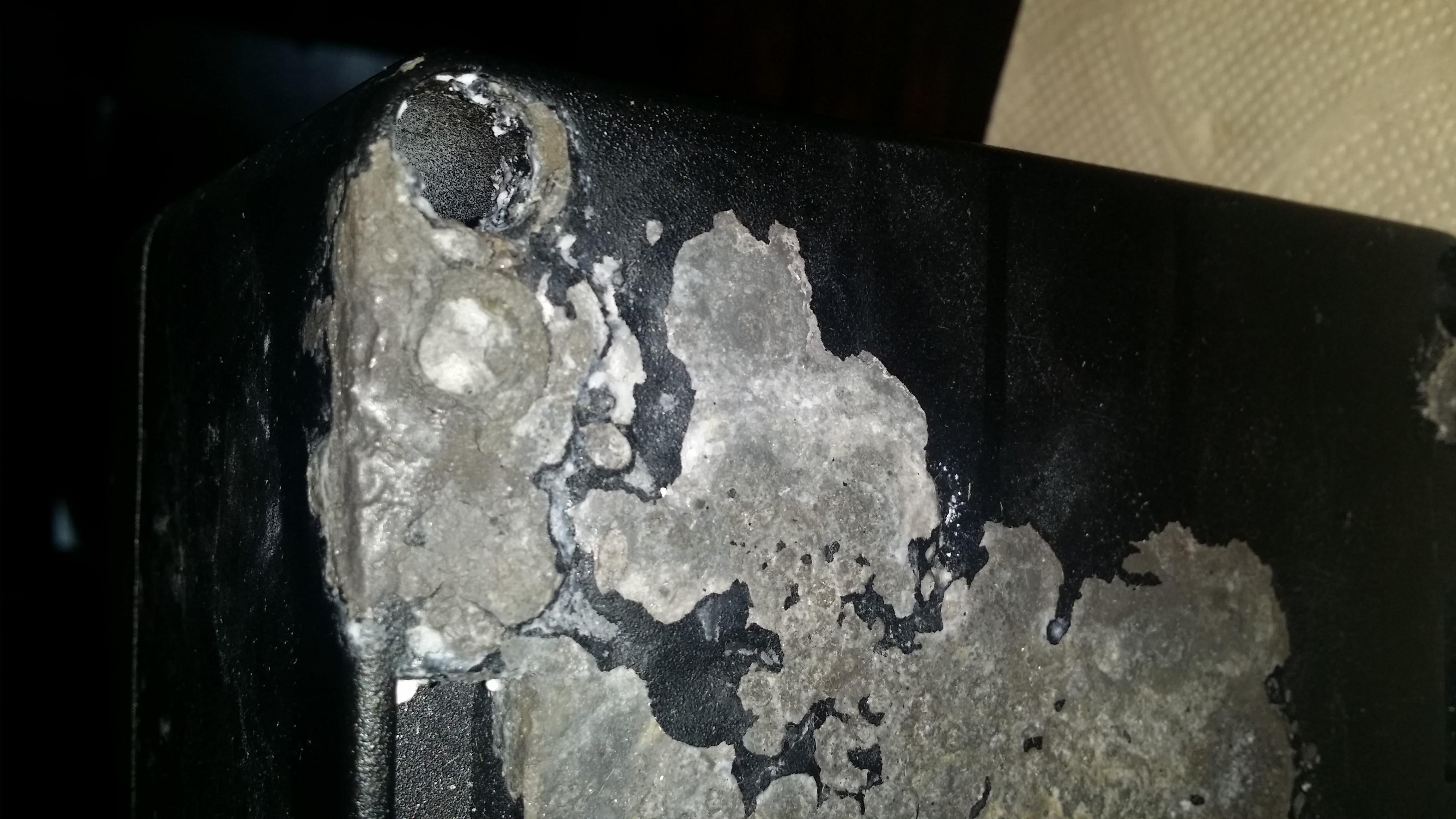


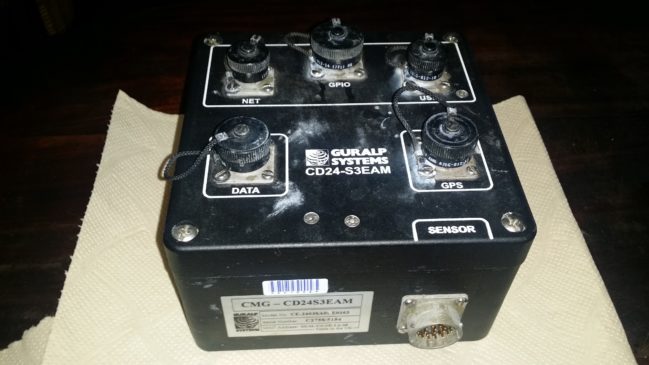



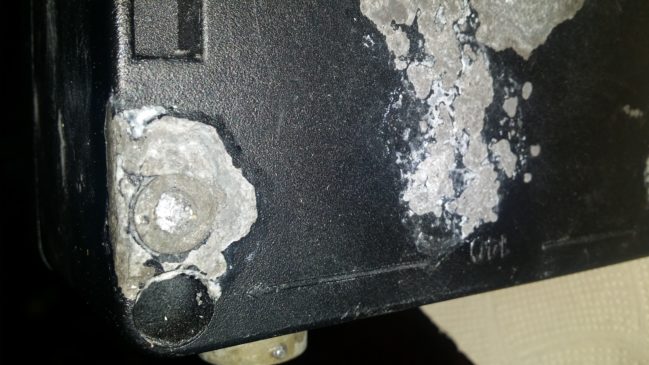

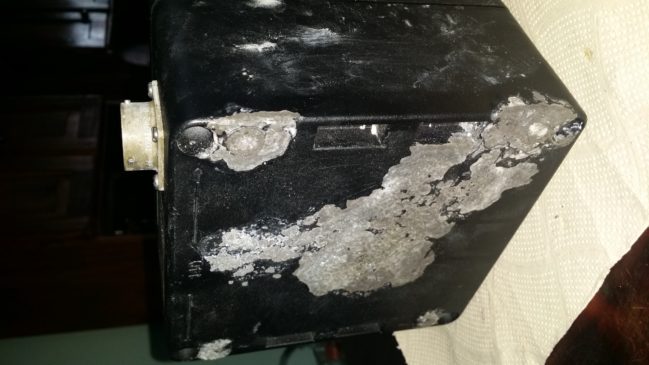

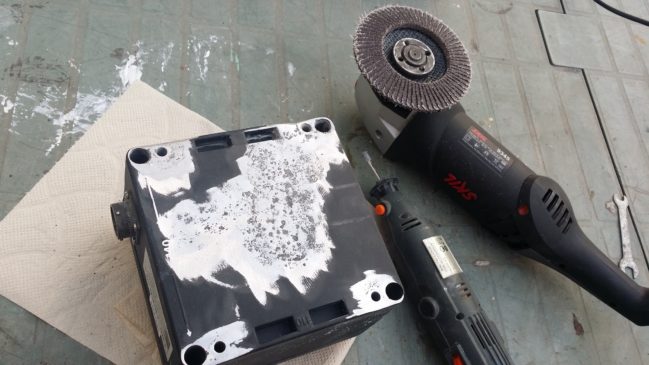
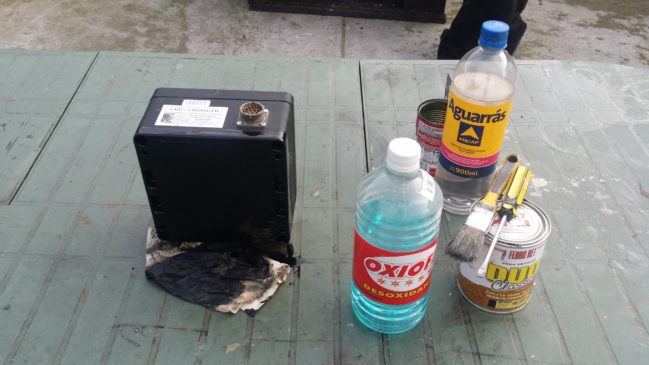
I like the helpful info you provide on your articles.
Your site is very good and we used it. I hope you are always successful.
Unfortunately from the method you show, without further addressing before painting, that oxidation will come right back as I’m sure you found out.
Aluminum is very fickle. I’ve worked with aluminum vessels with heavy corrosion that needed addressing and repainting. And in yachting we use premium 2k paints and primers and if you do not get every bit of corrosion removed including in pitted areas, it will come right back and blister the paint up. The only way to ensure it doesn’t is to sand blast it, then acid etch it leaving none of the little white corrosion spots. It MUST BE completely clean and shiny before priming. Not even a speck of corrosion left or even the aluminum oxide dust of it will corrode very quickly again.
Aluminum once it starts corroding or if it has heavy corrosion,it’s a total pain in the butt to rectify to the point it doesn’t corrode in that same area again.
Thanks for the info. I did not have a sander at the time. Also holes and design of the case made difficult to address those sections. We had other problems and the seller took it as part of a new one. But thanks for sharing your experience. Very nice your works at your site.